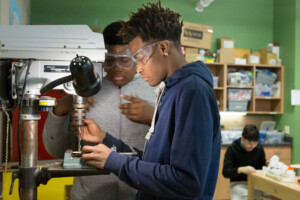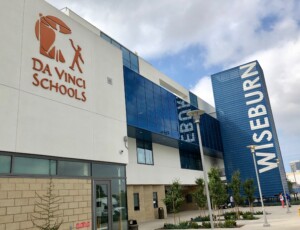Promoting Technology Careers through Local Business Partnerships

By Jeff Bushman
As job opportunities in computer science and technology fields continue to increase, K-12 districts must find creative ways to ramp up our course offerings to prepare students for the college and careers of the future.
According to the U.S. Department of Labor, an estimated 1.4 million jobs will be available in computer science fields by 2020.
To better prepare our students, Pacelli Catholic Schools in Stevens Point, Wisconsin, is partnering with our hometown student information system provider, Skyward, to develop a comprehensive computer science curriculum for the 2016-2017 school year.
Our administrative team worked closely with company executives to create new course offerings in grades 3-12. As the school’s director of technology, I oversaw the initiation, development and adoption of this new technology curriculum.
Our first discussions about adding a computer science curriculum began in early 2015, when we identified an opportunity to partner with Skyward to provide our students with a foundation for a future career in computer science. To garner student interest in potential courses, I took our high school students on a field trip to visit the company’s Stevens Point headquarters.
The group of students viewed a presentation about what a career in computer science looks like, took a tour of various departments, and participated in a computer programming activity led by a software engineer. Students were excited and I was sold. I knew this was something our school needed to pursue.
Starting Out
In the initial planning stages, our team looked at what each school could offer students of all grade levels. Planning and creating a full K-12 computer science track can be a massive undertaking, especially with a timeline of less than a year. The first obstacle to overcome included getting our initiative approved by school officials. I was fortunate to have immediate buy-in from my peers, who understood the positive impact a program like this would have on student learning. They saw a real opportunity for our school to be a leader in STEM education.
To introduce the program, we offered students a course in computer science and software engineering and a pilot coding program. After this, it was time to start putting the pieces together.
Almost instantly, I found each grade level posed a challenge for implementation. Our planning team needed to map out how each class would look before presenting to our teachers, and we needed to forecast any potential questions they may have. This proactive approach prevented small obstacles from turning into roadblocks.
Next Steps
As we approach the 2016-2017 school year, Pacelli will offer expanded classes in computer science, as well as an additional course in Advanced Placement (AP) computer science. This will provide high school students the opportunity to earn college credits and prepare for college-level work. We also plan to include a senior capstone course, immersing students in a real-life computer science work environment learning hands-on skills.
In addition to our schools’ administrative support, many parents provide positive feedback about the curriculum changes. Families praise the third grade coding program, and many are excited about our future plans. The initiatives we’re rolling out demonstrate our commitment to providing students with the knowledge and skills they will need to be successful upon graduation.
I encourage other schools and districts to form technology partnerships with their local businesses to increase computer science curriculum development, giving students exposure to college academic majors and career opportunities. There are several pieces of advice I would share with districts looking to add curriculum for the first time or expand on current course offerings.
- I cannot emphasize enough the importance of committing to a program and exercising your due-diligence to get all district staff members on board.
- If a school is looking at implementing computer science courses, I recommend starting small and then looking to grow later. This way you can modify the courses based on class feedback and results.
- To strengthen the program, develop community and industry partnerships that can support instruction and provide access to resources, expertise and opportunities for students.
Computer science courses can also be adopted on a budget and – at any grade level – can be done for free, or at a reasonable cost. Look at sites such as Code.org, Codecademy and Khan Academy. Lightbot, Kodable, Scratch and Hopscotch are more options for younger students – it comes down to whatever is the best fit for your school or district.
Computer science education helps students achieve skills that are transferable and relevant to many fields of study and professions. At Pacelli Catholic Schools we made this happen. Partnering with Skyward enables our students to transform their career goals into reality.
I’m lucky to have a great team that sees the overwhelming positive impact this will have on students. Our school has worked hard to get this program off the ground and I foresee computer science courses becoming a requirement for districts as technology becomes an essential component in the workplace.
For more, see:
- 3 Ways EdLeaders Can Level the Computer Science Literacy Playing Field
- 4 Myths To Bust On The Road to “Computer Science For All” Success
- 10 Coding & Computer Science Blogs to Bookmark
Jeff Bushman is Director of Technology at Pacelli Catholic Schools. Follow him or them on Twitter: @JeffBushmanEDU.
Stay in-the-know with all things EdTech and innovations in learning by signing up to receive the weekly Smart Update.







0 Comments
Leave a Comment
Your email address will not be published. All fields are required.